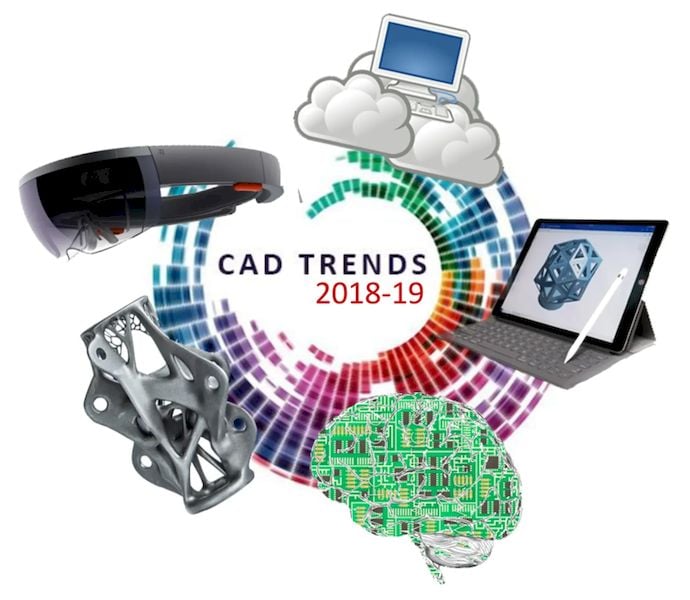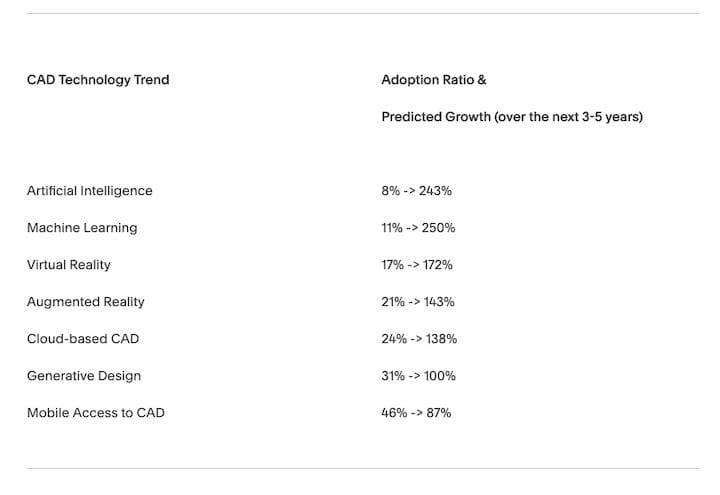
Here at engineering.com, we love to write about new tools and technologies in the world of CAD.
Generative design, cloud CAD, mobile CAD, virtual and augmented reality, artificial intelligence and machine learning, and more—these burgeoning technologies seem likely to play a role in the future of computer aided design. But how big will that role be? Which technologies will be transformative, and which will remain niche?
We can shed some light on this question via a recent report on global 2018/2019 CAD trends from market research firm Business Advantage. The reporters surveyed over 600 global CAD users to probe their awareness and usage of several CAD technologies. Some of those technologies, like 3D modeling and 2D drafting, are about as standard as they come. Other technologies, like generative design and virtual reality, are more novel—and potentially more transformative.
The report includes a metric called the adoption ratio, which refers to the amount of survey respondents who use a technology compared to the amount of respondents who are aware of that technology.
For example, 81 percent of respondents are aware of 3D modeling, and 69 percent of them use 3D modeling, so 3D modeling has an adoption ratio of 85 percent.
The more novel the technology, the lower its adoption ratio. From lowest to highest, these include: artificial intelligence (8%), machine learning (11%), virtual reality (17%), augmented reality (21%), cloud-based CAD (24%), generative design (31%), and mobile access to CAD (46%).Though these technologies may be inchoate (and some more than others), they also have the most potential to shape the future of CAD. But will they?
Survey respondents were asked to predict whether or not they’ll adopt these technologies within the next 3 to 5 years. By comparing the predicted future number of users to the current number of users, the report forecasted the potential growth of each technology. It found that the technologies with the most predicted growth are the exact same as those with the lowest adoption ratios:
It makes sense that the technologies with the lowest levels of adoption are those with the most room for growth. But how meaningful is this growth? Take, for example, virtual reality. While 54 percent of respondents were aware of virtual reality, only 9 percent are currently using it, and only 16 percent more predicted they’d be using it within 3 to 5 years.
Even if those predictions all pan out, and awareness of virtual reality does not increase at all, the adoption ratio of VR would still be among the bottom half of technologies.
This brings us to a final metric: perceived importance. Respondents were asked to rate each technology (that they were aware of) in terms of its importance to their business.
They ranked 3D modeling as the most important technology. Artificial intelligence was ranked as the least important, followed by all the other technologies with the lowest adoption ratios (which probably explains their low adoption).
Read more at ENGINEERING.com












Tech Soft 3D, a producer of powerful toolkits for CAD/CAM applications, received significant funding.